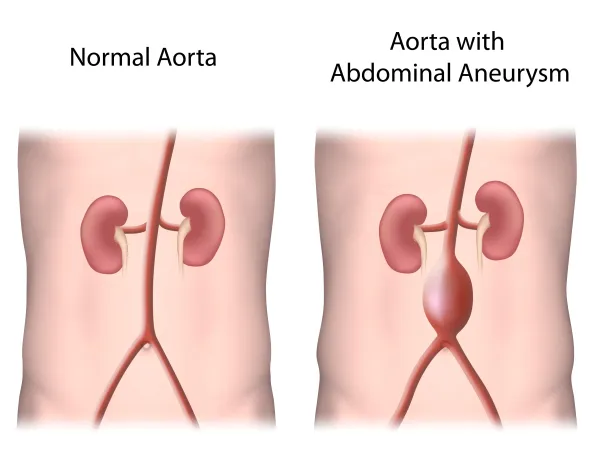Ensure Reimbursement for Terminated Procedures With These Tips

See what circumstances warrant 0, 50, and 100 percent payment. Coding for terminated procedures can be tricky — especially when you’ve got to consider different rules for facility versus physician coding. For those individuals working in ambulatory surgery centers (ASCs), you’ll want to look no further than Chapter 14 of the Medicare Claims Processing Manual (MCPM). In this issue, you’re going to home in on Section 40.4, which will guide you through the process of coding procedures terminated before and following anesthesia administration. Furthermore, you’ll see how the modifier you append will determine what percentage of reimbursement your facility receives. If that’s not enough, you’ll get a breakdown of how the coding processes for terminated procedures differs between physician and facility. Jump into this crucial portion of the Medicare Claims Processing Manual for all you need to know about terminated procedure coding. Find All You Need to Know in Chapter 14, Section 40. 4 Within Chapter 14 of the Medicare Claims Processing Manual, you want to have a look at Section 40.4 - Payment for Terminated Procedures. In this section, the Centers for Medicare & Medicaid Services (CMS) lays out specific rules for reimbursement of procedures performed in an ASC that are prematurely terminated. Specifically, CMS identifies a set of criteria for situations that warrant no payment, 50 percent payment, and full payment. First, have a look at what situations CMS deems no reimbursement is warranted for a terminated procedure: You might find it strange that the criteria for payment exclusively relies on whether the patient has crossed into the treatment or operating room territory, but that’s the groundwork that CMS has in place. In an instance where a preoperative evaluation and management (E/M) visit occurs prior to the procedure, and the physician deems the patient unfit for surgery based on this visit, CMS states that no facility reimbursement is warranted for the intended procedure. “However, if the physician E/M occurs in the hospital outpatient pre-op area, a facility visit may be warranted,” says Sarah L. Goodman, MBA, CHCAF, COC, CCP, FCS, president and CEO of SLG, Inc. Consulting in Raleigh, North Carolina. Look to HCPCS G0463 (Hospital outpatient clinic visit for assessment and management of a patient) for this service. Distinguish Between Modifiers 73, 74 Next, see what circumstances allow for 50 percent reimbursement for a terminated procedure: When working with a terminated procedure that occurs within the operating room prior to the administration of anesthesia, you should know that CMS will reimburse the facility 50 percent of the procedure code’s worth. If you’re billing for a facility, you should have an integral knowledge of what circumstances warrant the reporting of modifier 73 (Discontinued Out-Patient Hospital/Ambulatory Surgery Center (ASC) Procedure Prior to the Administration of Anesthesia) versus modifier 74 (Discontinued Out-Patient Hospital/Ambulatory Surgery Center (ASC) Procedure After Administration of Anesthesia). Properly appending these respective modifiers is important, as this will determine how CMS reimburses for the service. For instance, consider a scenario where a patient develops a cardiac arrythmia prior to the administration of anesthesia. In this case, you’d append modifier 73 for the facility services. If the arrythmia and discontinuation of the procedure occurs following administration of anesthesia, you’ll use modifier 74. CMS justifies the 50 percent reimbursement with modifier 73 by explaining the following: Get Full Reimbursement With Modifier 74 Reporting Finally, you should take note of what’s required in order for a terminated ASC procedure to receive full reimbursement from CMS: CMS goes on to explain that a procedure terminated following anesthesia administration will result in full compensation for the facility. This is because, unlike the physician’s role, the facility’s resources “are consumed in essentially the same manner and to the same extent as they would have had the surgery been completed.” It’s for this reason that CMS calls for separate modifiers between facility and physician to designate terminated surgical services. Include All Necessary Documentation in Claim Submission Now that you know exactly which clinical scenarios warrant 0 percent, 50 percent and 100 percent reimbursement, you need to know what to include when submitting the claim to secure reimbursement. First and foremost, you should submit the claim on paper with the complete operative report included. Within the operative report, CMS lays out a list of bullet points that should be documented. If the operative report does not include one or more of the following, you should include it separately: Keep in mind: You will not typically see some of these points documented when billing out for the facility setting. For instance, outside of “big ticket” items such as implants, it would be difficult to list unused supplies — and many more routine supplies are encompassed in operating room (OR) time or the ambulatory surgery center (ASC) procedure charge. Steer Clear of Modifiers 52, 53 in Facilities With respect to the reporting of modifiers 73 and 74, you should also be aware that CMS no longer accepts modifier 52 (Reduced Services) and modifier 53 (Discontinued Procedure) under Outpatient Prospective Payment System reporting. Specifically, CMS spells it out in the CMS Manual System Transmittal 442: This means that you should only be reporting modifiers 73 and 74 for the facility services. With respect to the physician’s services, modifiers 73 and 74 are not eligible for reporting. Instead, you’ll use modifier 52 for ancillary services or those procedures that do not warrant use of anesthesia, such as radiological imaging. For surgeries, you need to know when it’s appropriate to report modifier 53. Knowing that you should report modifier 53 for “discontinuation of physician services” isn’t exactly enough. The CPT® manual explains in Appendix A that modifier 53 “is not used to report the elective cancellation of a procedure prior to the patient’s anesthesia induction and/or surgical preparation in the operating suite.” This means that, when reporting physician services, you may not bill for the surgical service in any capacity if the procedure is terminated prior to anesthesia. Billing for the service prior to anesthesia is exclusively reserved for facility billing purposes.




